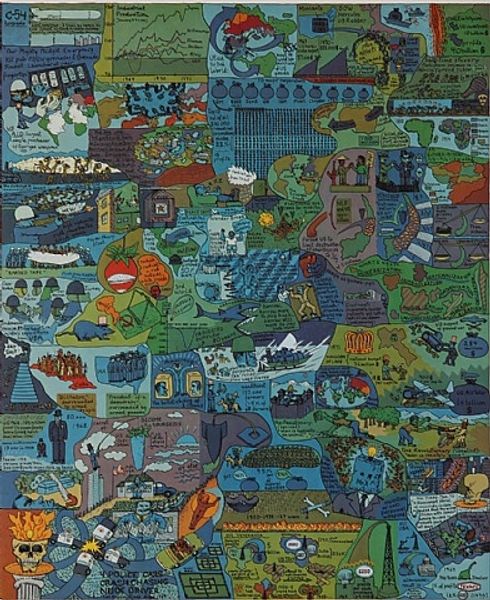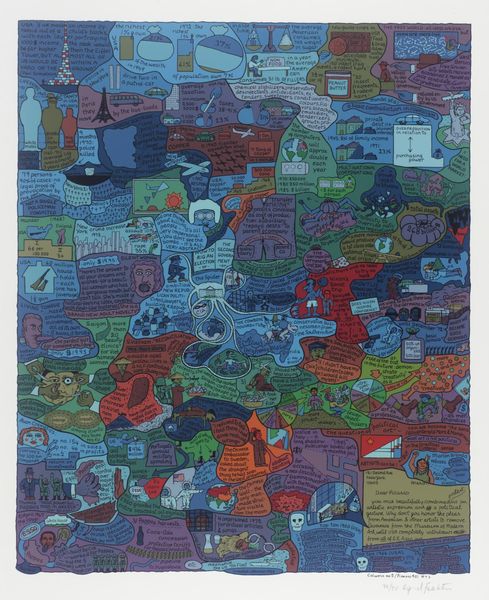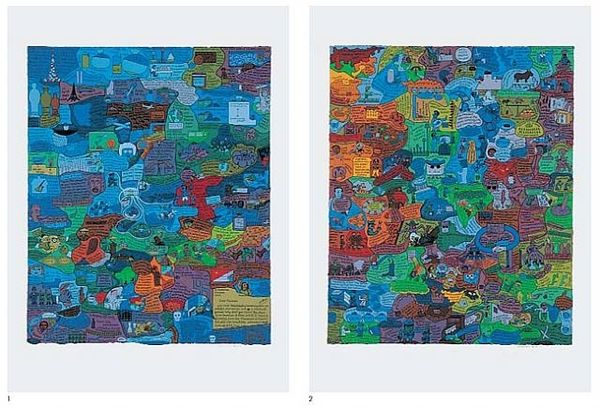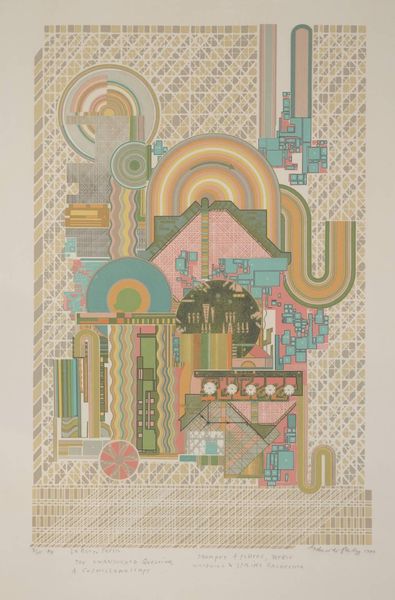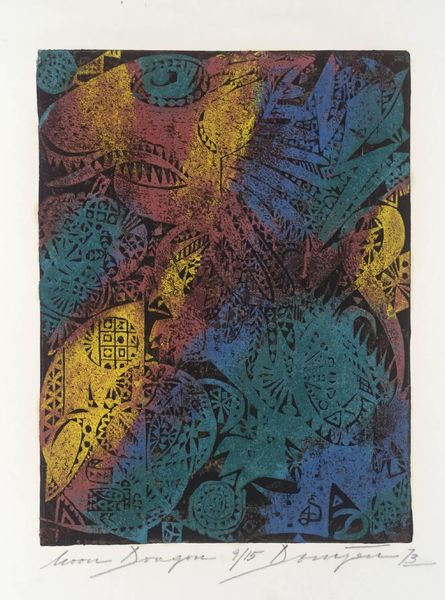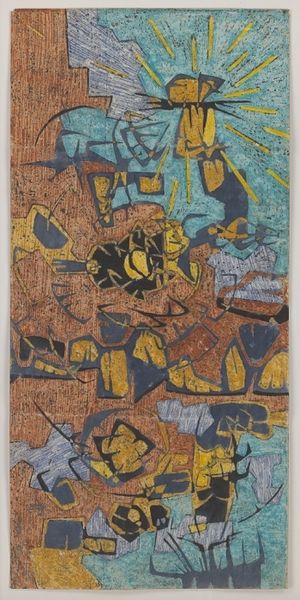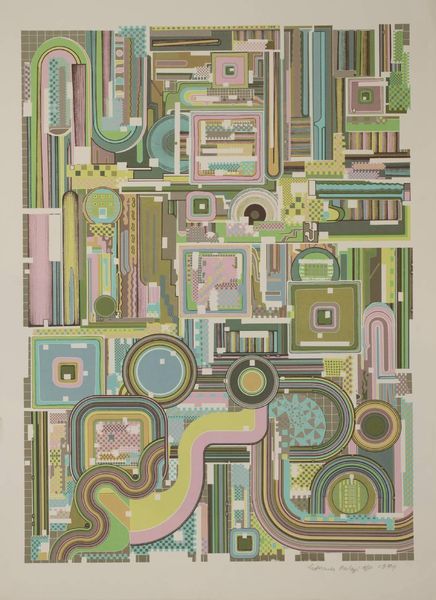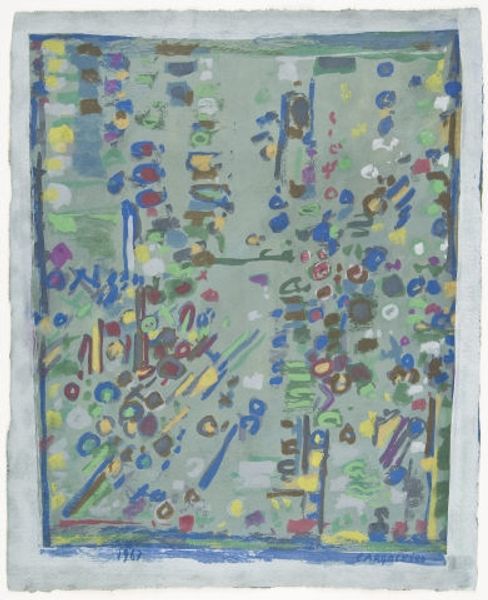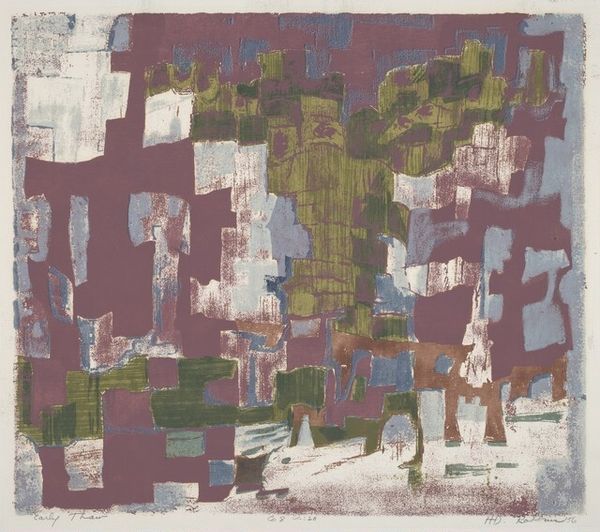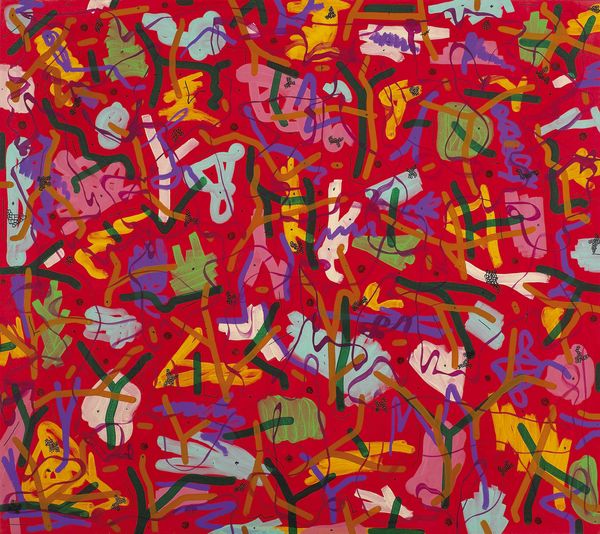
Dimensions: image: 588 x 483 mm
Copyright: © All Rights Reserved, DACS 2014 | CC-BY-NC-ND 4.0 DEED, Photo: Tate
Editor: This is Oyvind Fahlstrom's "Column no. 4 (IB-affair)." I'm struck by the density of information and how the image plane is so actively filled. What is your interpretation of the composition? Curator: Notice the careful arrangement of shapes, colors, and lines; Fahlstrom's rigorous composition creates a visual framework for what might seem like chaos. How do you perceive the interplay between the textual and the visual elements? Editor: It's a visual feast, though a bit overwhelming. It feels like a puzzle. I wonder if it can be resolved. Curator: Perhaps the resolution lies not in deciphering a puzzle, but rather in appreciating the formal structure as a reflection of complex social and political narratives. Does this shift in perspective alter your perception of the artwork? Editor: Yes, definitely. It reframes the work as a structured commentary. Thanks! Curator: Indeed. The structure itself becomes a significant layer of meaning.
Comments
tate 8 months ago
⋮
http://www.tate.org.uk/art/artworks/fahlstrom-column-no-4-ib-affair-p78632
Join the conversation
Join millions of artists and users on Artera today and experience the ultimate creative platform.
tate 8 months ago
⋮
Column No.4 (IB-affair) is one of a series of screenprints Fahlström made in the early 1970s. These prints use dense text, bright colours and cartoon illustrations to critique America’s military and economic expansion in the early 1970s. There are three elements in the title: ‘Column’, the series title, refers to the Fahlström’s newspaper columns for the Swedish press; ‘No.4’ refers to the place of this print within the series; while the bracketed caption ‘(IB-affair)’ refers to activities of the Swedish Intelligence Bureau, the theme of this work. Column No.4 (IB-affair) is a large edition of 300 copies. Another print in the series, Column No.2 (Picasso 90) (Tate P78631), was produced in a smaller edition of 120.
